Stan Matwin
A Review of Global Sensitivity Analysis Methods and a comparative case study on Digit Classification
Jun 23, 2024
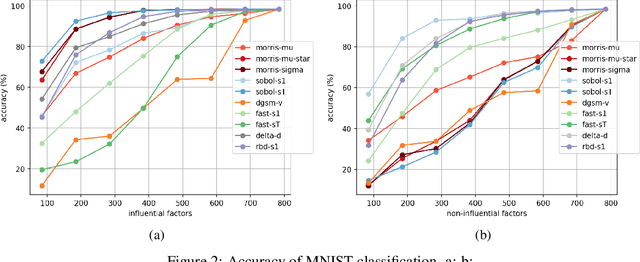
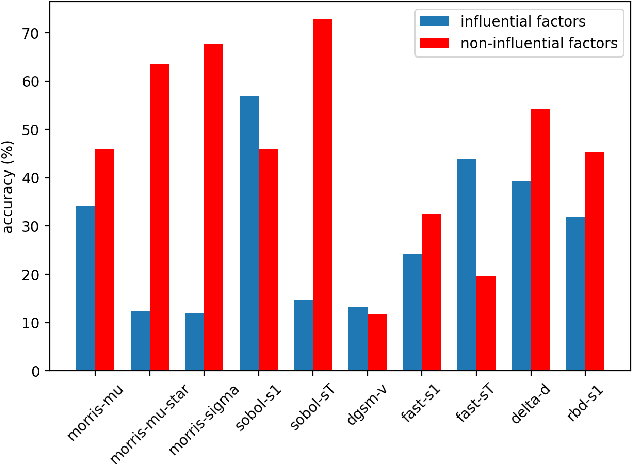
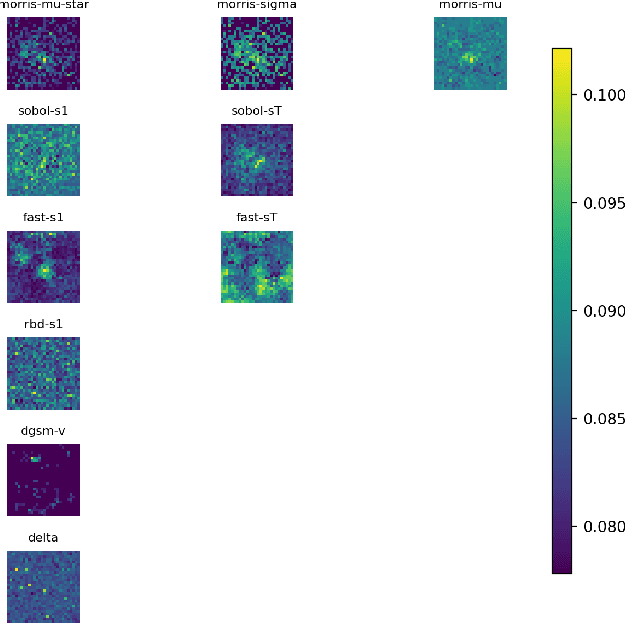
Abstract:Global sensitivity analysis (GSA) aims to detect influential input factors that lead a model to arrive at a certain decision and is a significant approach for mitigating the computational burden of processing high dimensional data. In this paper, we provide a comprehensive review and a comparison on global sensitivity analysis methods. Additionally, we propose a methodology for evaluating the efficacy of these methods by conducting a case study on MNIST digit dataset. Our study goes through the underlying mechanism of widely used GSA methods and highlights their efficacy through a comprehensive methodology.
Gravity-Informed Deep Learning Framework for Predicting Ship Traffic Flow and Invasion Risk of Non-Indigenous Species via Ballast Water Discharge
Jan 29, 2024Abstract:Invasive species in water bodies pose a major threat to the environment and biodiversity globally. Due to increased transportation and trade, non-native species have been introduced to new environments, causing damage to ecosystems and leading to economic losses in agriculture, forestry, and fisheries. Therefore, there is a pressing need for risk assessment and management techniques to mitigate the impact of these invasions. This study aims to develop a new physics-inspired model to forecast maritime shipping traffic and thus inform risk assessment of invasive species spread through global transportation networks. Inspired by the gravity model for international trades, our model considers various factors that influence the likelihood and impact of vessel activities, such as shipping flux density, distance between ports, trade flow, and centrality measures of transportation hubs. Additionally, by analyzing the risk network of invasive species, we provide a comprehensive framework for assessing the invasion threat level given a pair of origin and destination. Accordingly, this paper introduces transformers to gravity models to rebuild the short- and long-term dependencies that make the risk analysis feasible. Thus, we introduce a physics-inspired framework that achieves an 89% segmentation accuracy for existing and non-existing trajectories and an 84.8% accuracy for the number of vessels flowing between key port areas, representing more than 10% improvement over the traditional deep-gravity model. Along these lines, this research contributes to a better understanding of invasive species risk assessment. It allows policymakers, conservationists, and stakeholders to prioritize management actions by identifying high-risk invasion pathways. Besides, our model is versatile and can include new data sources, making it suitable for assessing species invasion risks in a changing global landscape.
Causal Generative Explainers using Counterfactual Inference: A Case Study on the Morpho-MNIST Dataset
Jan 21, 2024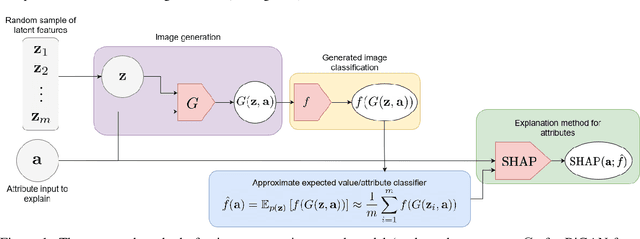
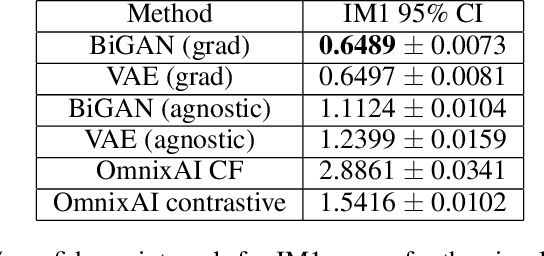
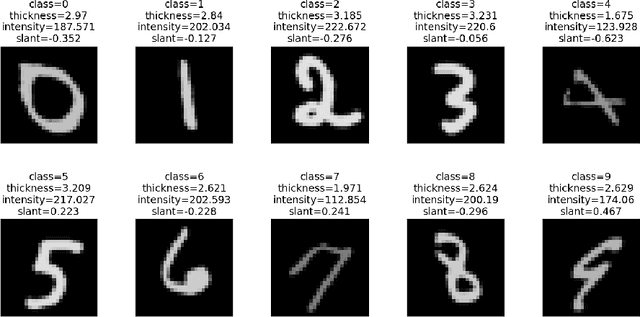
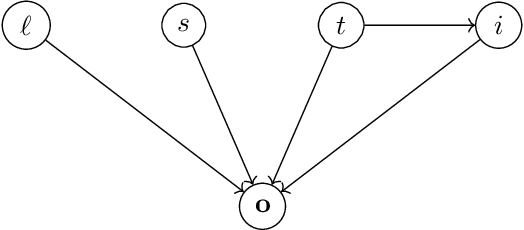
Abstract:In this paper, we propose leveraging causal generative learning as an interpretable tool for explaining image classifiers. Specifically, we present a generative counterfactual inference approach to study the influence of visual features (i.e., pixels) as well as causal factors through generative learning. To this end, we first uncover the most influential pixels on a classifier's decision by varying the value of a causal attribute via counterfactual inference and computing both Shapely and contrastive explanations for counterfactual images with these different attribute values. We then establish a Monte-Carlo mechanism using the generator of a causal generative model in order to adapt Shapley explainers to produce feature importances for the human-interpretable attributes of a causal dataset in the case where a classifier has been trained exclusively on the images of the dataset. Finally, we present optimization methods for creating counterfactual explanations of classifiers by means of counterfactual inference, proposing straightforward approaches for both differentiable and arbitrary classifiers. We exploit the Morpho-MNIST causal dataset as a case study for exploring our proposed methods for generating counterfacutl explantions. We employ visual explanation methods from OmnixAI open source toolkit to compare them with our proposed methods. By employing quantitative metrics to measure the interpretability of counterfactual explanations, we find that our proposed methods of counterfactual explanation offer more interpretable explanations compared to those generated from OmnixAI. This finding suggests that our methods are well-suited for generating highly interpretable counterfactual explanations on causal datasets.
Improving Dribbling, Passing, and Marking Actions in Soccer Simulation 2D Games Using Machine Learning
Jan 07, 2024Abstract:The RoboCup competition was started in 1997, and is known as the oldest RoboCup league. The RoboCup 2D Soccer Simulation League is a stochastic, partially observable soccer environment in which 24 autonomous agents play on two opposing teams. In this paper, we detail the main strategies and functionalities of CYRUS, the RoboCup 2021 2D Soccer Simulation League champions. The new functionalities presented and discussed in this work are (i) Multi Action Dribble, (ii) Pass Prediction and (iii) Marking Decision. The Multi Action Dribbling strategy enabled CYRUS to succeed more often and to be safer when dribbling actions were performed during a game. The Pass Prediction enhanced our gameplay by predicting our teammate's passing behavior, anticipating and making our agents collaborate better towards scoring goals. Finally, the Marking Decision addressed the multi-agent matching problem to improve CYRUS defensive strategy by finding an optimal solution to mark opponents' players.
Building a Safer Maritime Environment Through Multi-Path Long-Term Vessel Trajectory Forecasting
Oct 29, 2023



Abstract:Maritime transport is paramount to global economic growth and environmental sustainability. In this regard, the Automatic Identification System (AIS) data plays a significant role by offering real-time streaming data on vessel movement, which allows for enhanced traffic surveillance, assisting in vessel safety by avoiding vessel-to-vessel collisions and proactively preventing vessel-to-whale ones. This paper tackles an intrinsic problem to trajectory forecasting: the effective multi-path long-term vessel trajectory forecasting on engineered sequences of AIS data. We utilize an encoder-decoder model with Bidirectional Long Short-Term Memory Networks (Bi-LSTM) to predict the next 12 hours of vessel trajectories using 1 to 3 hours of AIS data. We feed the model with probabilistic features engineered from the AIS data that refer to the potential route and destination of each trajectory so that the model, leveraging convolutional layers for spatial feature learning and a position-aware attention mechanism that increases the importance of recent timesteps of a sequence during temporal feature learning, forecasts the vessel trajectory taking the potential route and destination into account. The F1 Score of these features is approximately 85% and 75%, indicating their efficiency in supplementing the neural network. We trialed our model in the Gulf of St. Lawrence, one of the North Atlantic Right Whales (NARW) habitats, achieving an R2 score exceeding 98% with varying techniques and features. Despite the high R2 score being attributed to well-defined shipping lanes, our model demonstrates superior complex decision-making during path selection. In addition, our model shows enhanced accuracy, with average and median forecasting errors of 11km and 6km, respectively. Our study confirms the potential of geographical data engineering and trajectory forecasting models for preserving marine life species.
Pyrus Base: An Open Source Python Framework for the RoboCup 2D Soccer Simulation
Jul 22, 2023Abstract:Soccer, also known as football in some parts of the world, involves two teams of eleven players whose objective is to score more goals than the opposing team. To simulate this game and attract scientists from all over the world to conduct research and participate in an annual computer-based soccer world cup, Soccer Simulation 2D (SS2D) was one of the leagues initiated in the RoboCup competition. In every SS2D game, two teams of 11 players and one coach connect to the RoboCup Soccer Simulation Server and compete against each other. Over the past few years, several C++ base codes have been employed to control agents' behavior and their communication with the server. Although C++ base codes have laid the foundation for the SS2D, developing them requires an advanced level of C++ programming. C++ language complexity is a limiting disadvantage of C++ base codes for all users, especially for beginners. To conquer the challenges of C++ base codes and provide a powerful baseline for developing machine learning concepts, we introduce Pyrus, the first Python base code for SS2D. Pyrus is developed to encourage researchers to efficiently develop their ideas and integrate machine learning algorithms into their teams. Pyrus base is open-source code, and it is publicly available under MIT License on GitHub
Observation Denoising in CYRUS Soccer Simulation 2D Team For RoboCup 2023
May 27, 2023


Abstract:The RoboCup competitions hold various leagues, and the Soccer Simulation 2D League is a major one among them. Soccer Simulation 2D (SS2D) match involves two teams, including 11 players and a coach, competing against each other. The players can only communicate with the Soccer Simulation Server during the game. This paper presents the latest research of the CYRUS soccer simulation 2D team, the champion of RoboCup 2021. We will explain our denoising idea powered by long short-term memory networks (LSTM) and deep neural networks (DNN). The CYRUS team uses the CYRUS2D base code that was developed based on the Helios and Gliders bases.
Evolutionary Augmentation Policy Optimization for Self-supervised Learning
Mar 02, 2023



Abstract:Self-supervised learning (SSL) is a Machine Learning algorithm for pretraining Deep Neural Networks (DNNs) without requiring manually labeled data. The central idea of this learning technique is based on an auxiliary stage aka pretext task in which labeled data are created automatically through data augmentation and exploited for pretraining the DNN. However, the effect of each pretext task is not well studied or compared in the literature. In this paper, we study the contribution of augmentation operators on the performance of self supervised learning algorithms in a constrained settings. We propose an evolutionary search method for optimization of data augmentation pipeline in pretext tasks and measure the impact of augmentation operators in several SOTA SSL algorithms. By encoding different combination of augmentation operators in chromosomes we seek the optimal augmentation policies through an evolutionary optimization mechanism. We further introduce methods for analyzing and explaining the performance of optimized SSL algorithms. Our results indicate that our proposed method can find solutions that outperform the accuracy of classification of SSL algorithms which confirms the influence of augmentation policy choice on the overall performance of SSL algorithms. We also compare optimal SSL solutions found by our evolutionary search mechanism and show the effect of batch size in the pretext task on two visual datasets.
Cyrus2D base: Source Code Base for RoboCup 2D Soccer Simulation League
Nov 15, 2022Abstract:Soccer Simulation 2D League is one of the major leagues of RoboCup competitions. In a Soccer Simulation 2D (SS2D) game, two teams of 11 players and one coach compete against each other. Several base codes have been released for the RoboCup soccer simulation 2D (RCSS2D) community that have promoted the application of multi-agent and AI algorithms in this field. In this paper, we introduce "Cyrus2D Base", which is derived from the base code of the RCSS2D 2021 champion. We merged Gliders2D base V2.6 with the newest version of the Helios base. We applied several features of Cyrus2021 to improve the performance and capabilities of this base alongside a Data Extractor to facilitate the implementation of machine learning in the field. We have tested this base code in different teams and scenarios, and the obtained results demonstrate significant improvements in the defensive and offensive strategy of the team.
A semi-supervised geometric-driven methodology for supervised fishing activity detection on multi-source AIS tracking messages
Jul 12, 2022



Abstract:Automatic Identification System (AIS) messages are useful for tracking vessel activity across oceans worldwide using radio links and satellite transceivers. Such data plays a significant role in tracking vessel activity and mapping mobility patterns such as those found in fishing. Accordingly, this paper proposes a geometric-driven semi-supervised approach for fishing activity detection from AIS data. Through the proposed methodology we show how to explore the information included in the messages to extract features describing the geometry of the vessel route. To this end, we leverage the unsupervised nature of cluster analysis to label the trajectory geometry highlighting the changes in the vessel's moving pattern which tends to indicate fishing activity. The labels obtained by the proposed unsupervised approach are used to detect fishing activities, which we approach as a time-series classification task. In this context, we propose a solution using recurrent neural networks on AIS data streams with roughly 87% of the overall $F$-score on the whole trajectories of 50 different unseen fishing vessels. Such results are accompanied by a broad benchmark study assessing the performance of different Recurrent Neural Network (RNN) architectures. In conclusion, this work contributes by proposing a thorough process that includes data preparation, labeling, data modeling, and model validation. Therefore, we present a novel solution for mobility pattern detection that relies upon unfolding the trajectory in time and observing their inherent geometry.
 Add to Chrome
Add to Chrome Add to Firefox
Add to Firefox Add to Edge
Add to Edge